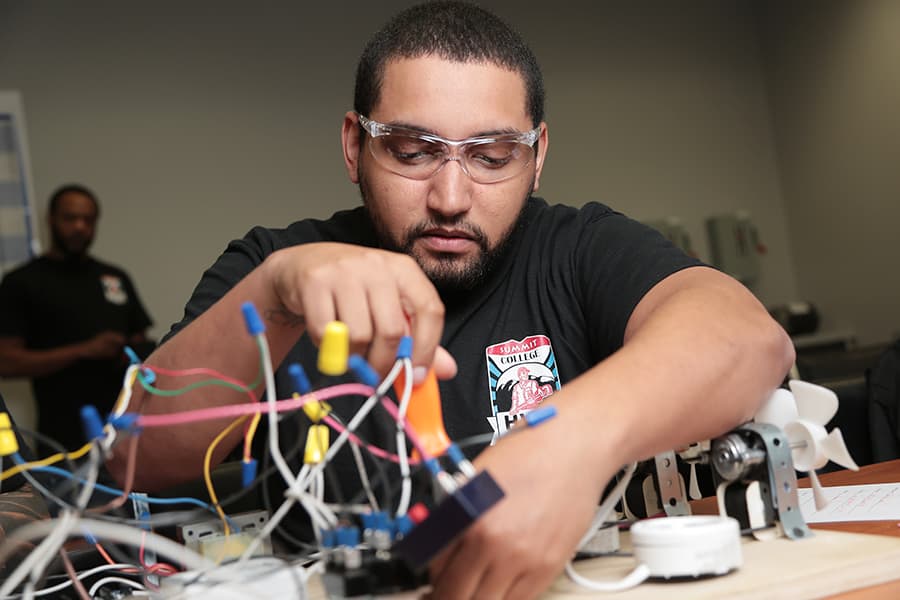If you’re thinking of doing a DIY project that requires an electrical condition, don’t go choosing the wires based on your color preferences. If that’s what you’re thinking, hire an electrician to do the job! That’s because the National Electrical Code® (NEC) wiring color code says that there is an electrical wiring color code for each wire. Getting it wrong could result in a deadly shock. It can’t be that difficult to change an outlet, can it?
What is the NEC wiring color code?
The most widely adopted code in the world, the NEC was written with safety in mind. It’s the most complete set of electrical code requirements that govern electrical installations. All houses built since the 1940s (and older homes that have been rewired) all subscribe to this cable color coding. If you open an electrical outlet or light switch box, you’ll see multiple wires of different colors that may be grouped together. Each of them serves a different purpose, and it’s critical to know the household wire code to keep yourself safe and your house wiring in optimum working order.

What is the color code for electrical wiring?
There are two parts to non-metallic electrical cable: the outer sheathing, or jacket, and the inner wires. The colored sheathing covers the inner wires (copper wires). The markings on the outside sheathing indicate the number and gauge of wires inside; the color of the sheathing indicates the purpose.
- Black wires carry power from the electrical service panel to an outlet, light or other destination. A black wire is considered a hot wire because it carries a live electrical load.
- Red wires are also hot wires and in a 240-volt installation, are sometimes used as secondary hot wires. These are used to interconnect smoke detectors, so that if one alarm goes off, all the others do as well.
- White and gray wires are neutral wires, which connect to the neutral bus bar (a conductive piece of metal in an electrical panel that attracts current and carries it throughout the house). Even though they’re neutral, white and gray wires still can carry a current—especially if the current load is unbalanced.
- White wires wrapped in black or red electrical tape are hot wires. The tape just serves as an alert that the normally neutral wire is being used as a hot wire rather than a neutral one. As a precaution, loop the tape around it several times to make sure you know it’s not neutral.
- Green wires ground an electrical circuit. A ground wire connects the grounding terminal in an outlet box and runs it to a ground bus bar in the electrical panel. As a failsafe, the green ground wire gives electric current a place to escape to the ground in the event of a live wire touching metal or something else that is conductive. Green wires can only connect to other green wires and may still be live if there’s a problem or fault in the electrical system.
- Bare copper wires are the most common type of grounding wires.
- Blue and yellow wires, although not usually found in non-metallic (NM) cable, are sometimes used as hot wires in an electrical conduit. Blue wires are travelers, commonly used in three- and four-way switch operations, which might be the switches at the top or bottom of a staircase that control the same light.

How can I learn more and become an electrician?
Summit College offers electrical training programs in San Bernardino, El Cajon and Santa Ana. According to O*NETOnLine, job growth for electricians between 2018-2028 is growing 10 percent in the U.S.—higher than average for other professions; in California the rate is 13 percent. That’s great news! After just nine months of Summit training, you’ll be prepared for an entry-level position as an electrician. You’ll learn to repair and maintain electrical systems, examine electrical units, provide customer service and communicate with clients. Other benefits of a Summit education are flexible day and evening class schedules, free tutoring and career services.
For more information about Summit College’s electrician program, call today.
Tags: electrical code, NEC wiring code, wiring



